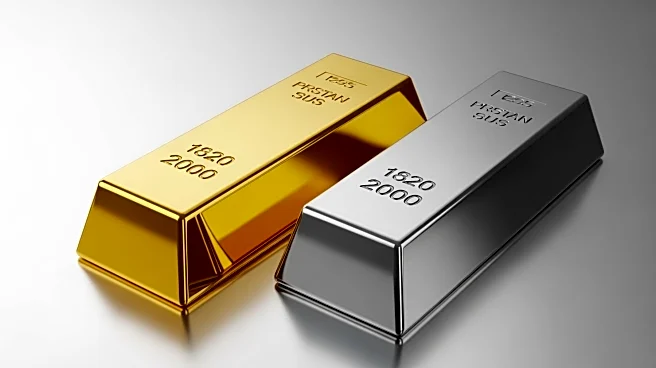What's Happening?
HSBC has projected that gold prices could reach as high as $5,000 per ounce in 2026, driven by a combination of geopolitical tensions, economic policy uncertainty, and rising public debt. The bank has revised its 2025 average gold price forecast to $3,455
per ounce, up from $3,355, and its 2026 forecast to $4,600, an increase from the previous estimate of $3,950. This bullish outlook is supported by robust central bank buying, increased exchange-traded-fund inflows, and expectations of U.S. rate cuts. HSBC anticipates that the bull market will continue to push prices higher in the first half of 2026, although significant volatility and price moderation may occur in the latter half of the year.
Why It's Important?
The forecast by HSBC highlights the potential impact of geopolitical and economic uncertainties on commodity markets, particularly gold. As a traditional 'safe haven' asset, gold is often sought after during times of instability, which can lead to increased demand and higher prices. This prediction suggests that investors may continue to turn to gold as a hedge against economic volatility, potentially affecting investment strategies and market dynamics. The anticipated price increase could benefit gold producers and investors, while posing challenges for industries reliant on gold as a raw material.
What's Next?
HSBC's forecast aligns with similar predictions from other financial institutions, indicating a consensus on the upward trajectory of gold prices. As geopolitical tensions and economic uncertainties persist, market participants may continue to monitor these factors closely. The potential for significant volatility in the latter half of 2026 suggests that investors should be prepared for fluctuations in gold prices. Additionally, the sustained interest from new market entrants could influence long-term investment trends in the gold sector.
Beyond the Headlines
The forecast underscores the broader implications of geopolitical and economic factors on global markets. The role of gold as a diversification tool and its 'safe haven' qualities may attract a new wave of investors, potentially altering traditional investment patterns. This shift could have long-term effects on how commodities are perceived and utilized in financial portfolios, emphasizing the importance of understanding the interconnectedness of global events and market responses.













